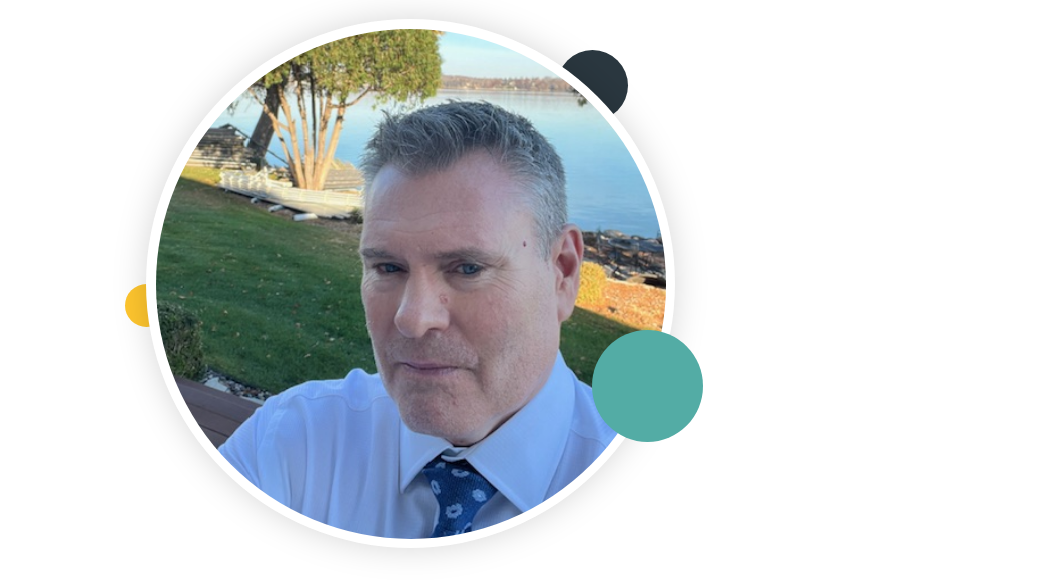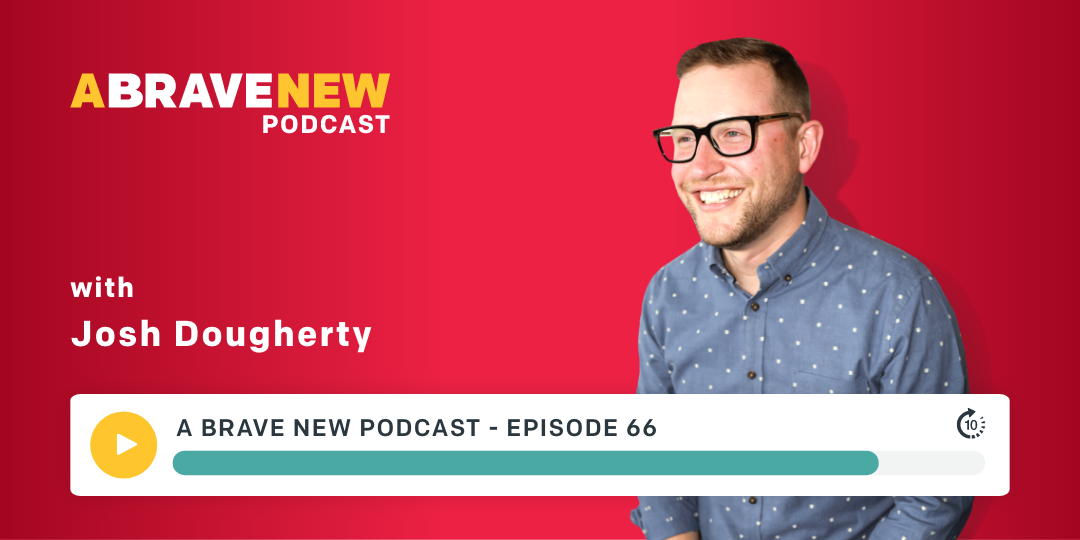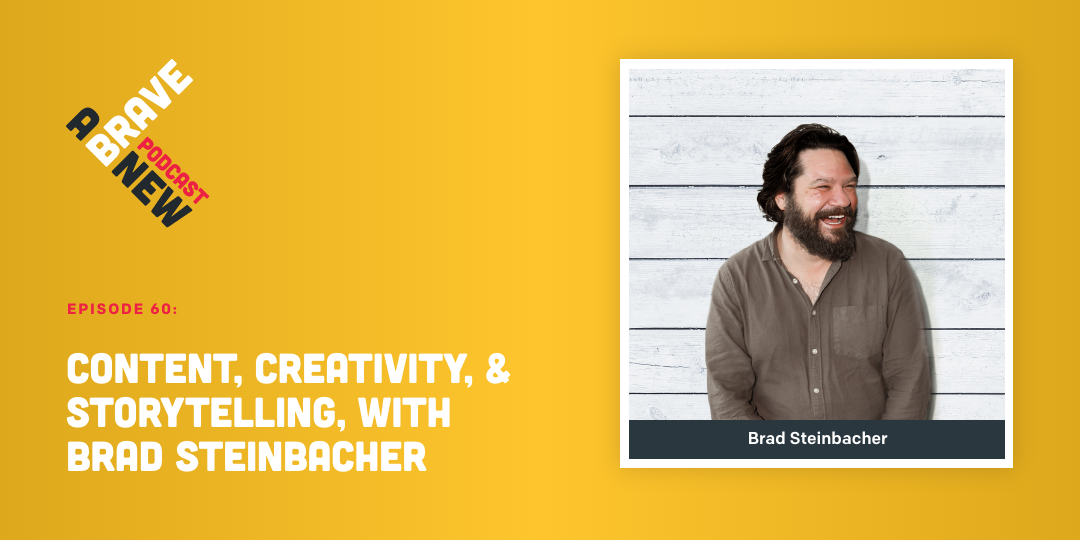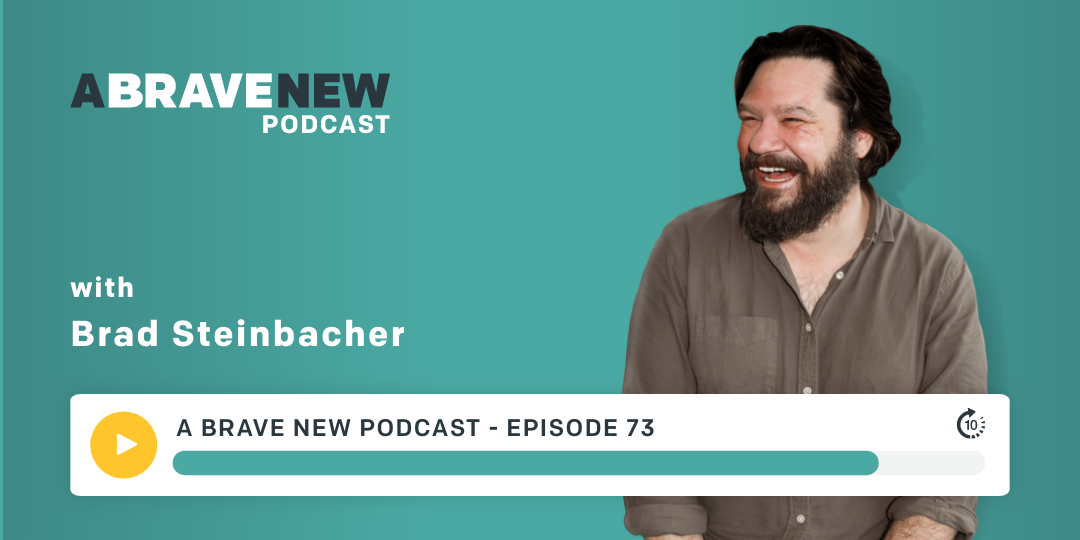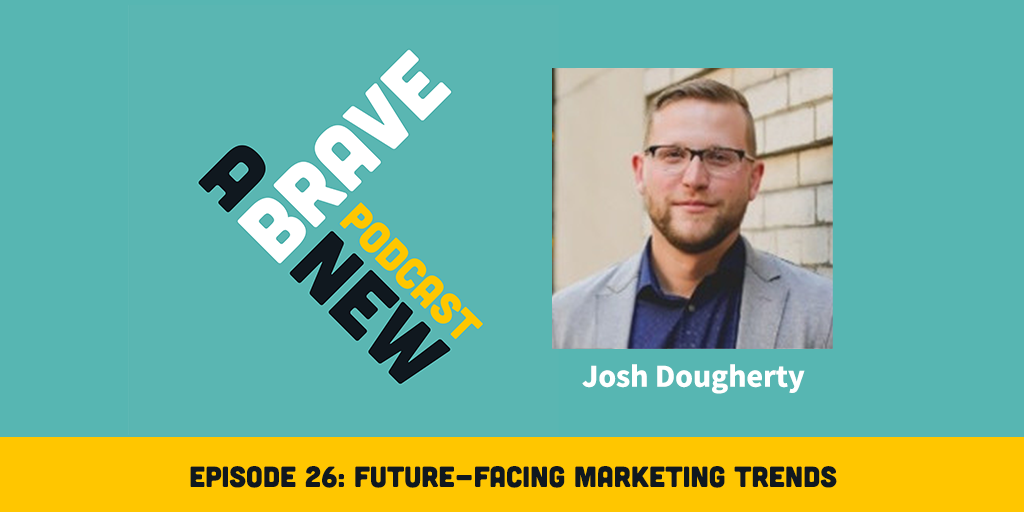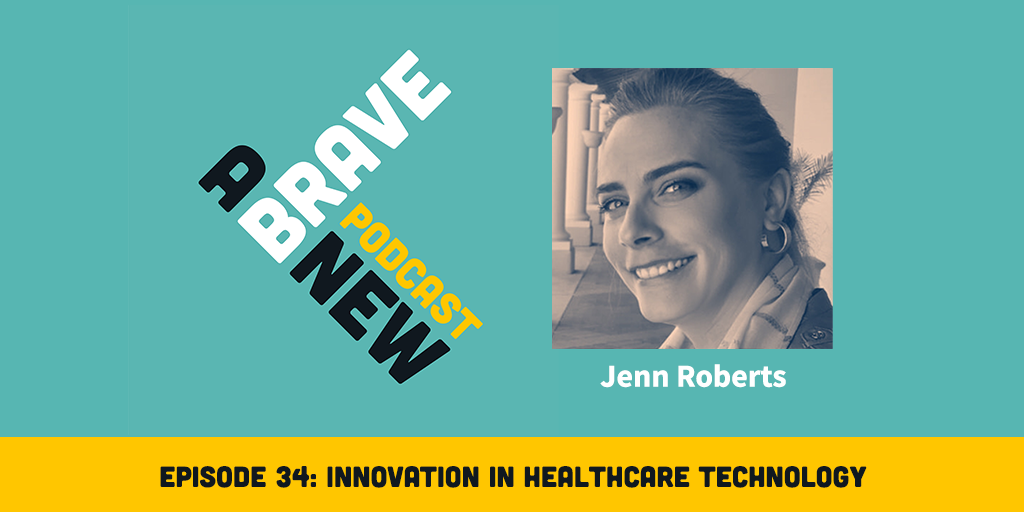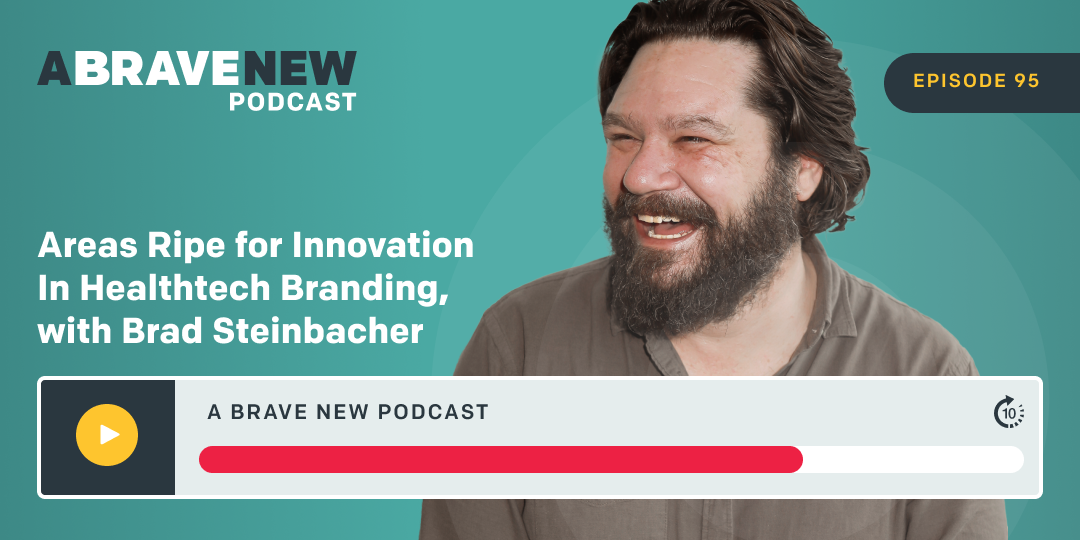Jon is the President/CEO of Phoji Inc, the creator, inventor and patent holder of the custom emoji. Jon also serves as fractional Advisor, Business Development for CTO Teammate and fractional Advisor, Business Development for Bright Bucks Inc.
CTO Teammate is focused on maximizing the ROI on technology by providing fractional resources expert in their discipline.
What you’ll learn about in this episode:
- The importance of alignment between branding, marketing, and technology
- Why slowing down and developing a plan for digital transformation is the best thing you can do before going through a substantial technology change
- How Jon’s company Phoji managed their transition from being an app to a Saas company
- Some of the factors private equity and VCs look for when evaluating the tech of a company in the pre-investment phase
- The key trends all companies need to consider in 2024 as the evaluate their technology approach
Additional resources:
- Josh Dougherty on LinkedIn
- Learn About Josh Dougherty’s Keynote Speaking
- CTO Teammate’s website
- Jon Christensen on Linkedin
- Jon Christensen’s Email
- A Brave New’s Website
Transcript:
Josh Dougherty:
Welcome to A Brave New Podcast. This is a show about branding and marketing, but more than that, it's an exploration of what it takes to create brands that will be remembered and how marketing can be a catalyst for those brands' success. I'm Josh Dougherty, your host. Let's dive in.
Hello, and welcome to the show today. Really excited to have you on. Today, we're going to have a conversation about the synergy between marketing, branding, and technology. To help me have that conversation, I'm joined by Jon Christensen, who is both the president and CEO of Phoji Inc. He is the creator, inventor, and patent holder of the custom emoji, as well as an advisor for an organization that I've had a number of conversations with. Really appreciate their approach. They're named CTO Teammate. CTO Teammate is really focused on maximizing the ROI on technology by providing fractional resources that are experts in the technology discipline.
And so I’m looking forward to having Jon share his wisdom about how organizations really leverage technology to drive growth and be a catalyst for growth, and how they make sure that there's alignment between technology and brand to make sure that growth is authentic. So without further ado, I'd like to welcome Jon to the show. Jon, it's great to have you here.
Jon Christensen:
Hey, Josh. Appreciate it. Thanks for the opportunity.
Josh Dougherty:
Awesome. Well, I know we've had a lot of past conversations, but I'd love for you to have a chance to start out just by sharing a little bit about your story. Tell me a little bit about your career path, where it's taken you, so that our listeners can learn a little bit more about you.
Jon Christensen:
Sure. Appreciate that. Thank you. So my experiences range from working for the very largest of the technology organizations, the household name kinds of folks. Kind of spent about half of my career doing that, and then half of my career kind on the other side, starting with doing a couple of technology startups where I was, in one case, employee number one. But I really enjoy technology in general. And I enjoy the impact you can have on business just by leveraging it in the right way, and just have enjoyed, really, the transformation of where we are today with digital and kind of the empowerment that I think it gives all of us as individuals, as well.
Josh Dougherty:
Totally. I can really resonate with that. Everyone has the opportunity to transform their business, what they're doing with technologies today, which was very different than maybe 15, 20 years ago. Right?
Jon Christensen:
Exactly. Yeah. Currently, I am working for ... doing a kind of variety of things. So Phoji is the inventor, creator, and patent holder of the custom emoji. So we're in the digital marketing space with really trying to improve the level of personalization and conversational kinds of communication and all kinds of applications, as you can imagine. Then, I advise two companies from a business development perspective, which I really enjoy working with folks that are looking to grow what they're doing, great core competencies.
One of those is Bright Bucks, which is in the customer engagement, client engagement space. They build apps, actual mobile app experiences, white label and private label. Then, the topic for today, I advise CTO Teammate, which is an organization that focuses on providing fractional resources in helping companies leverage their return on investment in technology in a broad perspective. Interesting story, I was a client of theirs originally and really enjoyed the team so much that I just kicked around some things that I could do to kind of help them from an advisory perspective in business development.
Josh Dougherty:
Yeah. Nice. That's always awesome when you can find those connections and then figure out a way to continue the relationship. I'm excited to talk to you because of, I think, your multifaceted history. Right? If you work with big tech, and then you have worked on the other side, you have kind of a unique view of both understanding, I think, the potential the technology has, but also knowing the reality of, how does that come to life for smaller, more agile companies, as well? So I'd love to hear a little bit more. Obviously, we're talking about CTO Teammate, but more broadly, we're talking about how you leverage technology to drive growth for your brand.
Jon Christensen:
Mm-hmm.
Josh Dougherty:
Can you share a little bit more about what you're focused on at CTO Teammate right now and what the organization is focused on, as well?
Jon Christensen:
Sure. Well, we have a couple of core competencies, things that we really do well. One of those is project-based fractional. We basically say, "Hey. Put a CTO on your team," and it's really great to be able to work with organizations that have, typically, great products, great ideas. They're in growth mode, but maybe have somewhat limited budgets around technology infrastructure. And so helping those companies bring their ideas to light is really fun.
Josh Dougherty:
Yeah.
Jon Christensen:
So that's one core competency and really how I met the team at CTO Teammate. They helped us, as we were getting going, transform our business from one of a mobile app to a SaaS company. So, big transformation, and they led that for us.
Josh Dougherty:
I see.
Jon Christensen:
Then, the second thing that we do, which is becoming, I think, more and more of a branded business. Right? Because it's really different, as we work with private equity and VC-related firms, angel investors occasionally, as well, help them evaluate investments, pre- and post-investment technology. Does it align with the business? Where is it at? What needs to be done, and is it branded correctly? It is really what I would say the vision of the company, what they want to do, their service, their product, is that being presented right, technology? Today, technology and your infrastructure, and kind of how you go to market is, many times, your brand and tied so closely.
Josh Dougherty:
Totally, and that, I think, is such a relevant piece to the type of organizations that we work with and those that listen to this podcast who are maybe growing, trying to grow a technology business. Maybe it's a SaaS business. Maybe it's an app. Maybe it's any other type of business leveraging technology, and they're trying to think about how do we ensure that our tech stack and our approach to technology is set up so that an investor would actually be interested? So it'll be good to hear your perspective there, but I'd love to dive into the topic.
On the podcast, we talk a lot about this intersection between marketing and branding and the ability of both disciplines to serve as a catalyst for growth, not just something that's supporting the organization, but also actually driving that growth forward. I think tech is the other category that I would say is that big catalyst for growth that has the opportunity to bring forward breakthrough ideas to do things that people didn't think were possible before or to drive massive efficiency that can be a transformation for a business, as well. How do you think technology intersects with branding? Where are the crossover points, and how do you view technology as a growth agent?
Jon Christensen:
Sure. So I think oftentimes, technology is somewhat intangible, in terms of what it is. Right? It's in the cloud. It's on our phone, versus kind of an old-fashioned product, a widget. And so I think branding and marketing, in terms of bringing the benefit, the features and the benefits, what does that technology do, really to the forefront, and you can do that in a variety of ways, build some consumer confidence ...
Josh Dougherty:
Yeah.
Jon Christensen:
... around that, which I think is really important when you're talking branding and marketing in that intersection. When you talk about technology, does it do what they say it does? Do you get the benefits of that technology, and does it do it safely and securely? Are there things like privacy? Is that all figured out? Those are things that consumers and, really, in a B2B world, people want figured out. So really, the technology ties to the marketing, and the brand becomes a lot of those things that create consumer confidence and trust, I would say. So I think it's so tied together, maybe more importantly than something that I could hold and feel and maybe determine some of that for myself as a consumer.
Josh Dougherty:
Yep. The thing that conversation brought to mind for me is the technology has to be able to follow through on the promises. That's something that you said. Can it actually follow through? So what are some of the things that you think of with people that are common areas they need to be considering with their technology to make sure that they're able to follow through on the promises they're making publicly? Are there commonalities across companies? I know everyone has different use cases, right, but what are the common things that you want people to be thinking about?
Jon Christensen:
Sure. Yep. I think kind of how a technology works in a somewhat untested environment is important, because you're right, everybody has the case studies, and they're fairly easy to do. But I think, how does the product stand up in an unfenced environment, or how do you ensure that you can confidently kind of predict? I would say we work with private equity and VC-related firms, and really, this is really part of branding. Right?
Josh Dougherty:
Yeah.
Jon Christensen:
Its predictability. Right?
Josh Dougherty:
Totally.
Jon Christensen:
Is it predictable for the future? Is it sustainable? Will it deliver what the company's goals are? Does it deliver what the customer's goals are? So I think to the extent that, and this, I'll even lean back on my experiences in working with the larger household name technology companies, to the extent that that was done really well with products, they were a lot easier to brand.
Josh Dougherty:
Totally.
Jon Christensen:
They were a lot easier to market, and then, when things maybe had to be rushed to the market, not as much.
Josh Dougherty:
Yeah. Can you share a couple examples from your experience, maybe from companies you're advising now, from past experience where you think there's been really good alignment between branding and technology and maybe what some of those results have been when those two things have been working together?
Jon Christensen:
Sure. So I think we worked with a company that had a very traditional product, sort of service product that was delivered in person, I guess you'd say traditional, and they needed to transform, somewhat related to COVID, and somewhat just related to how the world is now, delivering that remotely. And so the ability to have that new offering with the same confidence in terms of how that company delivered it previously and have that, really, I think, articulated well was really where branding, if you want to say product, marketing, branding, were all aligned. That was a great example of that. Really, I think anytime you're doing transformation, I can speak to what we've done in the Phoji-related piece, which is-
Josh Dougherty:
Yeah. That'd be great.
Jon Christensen:
Yeah. Transformation from one of a mobile app, and think about your brand. Your brand, then, is a download in a way. Right?
Josh Dougherty:
Yep.
Jon Christensen:
Branding is related to how you get the product on your phone versus when it was just SaaS, which is an API connection. So all of that, if it's aligned and really clearly communicated as your brand, then I think it was successful. CTO Teammate played a great role in tying that all together before I actually was advising them, but when, really, I was a client of theirs.
Josh Dougherty:
Totally, and how did you maybe keep your customers? Right? That's a big shift, the shift that you described. It's so easy to say an app to SaaS is, it feels, oh, simple. It's very complex, and so how did you keep your customers engaged in it, really keep the business continuity going through such a big transition?
Jon Christensen:
Yeah. I think the key was that it was well thought out. It was well-planned on the front end. I think it was articulated in terms of the benefits to those clients. So this is why you want to go through this with us, and this is what you get on the other side. You're going to get a bigger return on your investment, a better longer-term strategy. It's going to help solve more of your problems. Not to go into the weeds too much-
Josh Dougherty:
Totally.
Jon Christensen:
But understanding, why were they using us? Right? So understanding what kind of a problem or challenge we were solving for them and showing them a path to better solving that for them was key, and that's-
Josh Dougherty:
Yeah. So it's almost separating the business problem outside of the technology realm so that you can say, "And now we're inserting this new technology approach to better solve that problem."
Jon Christensen:
Exactly, and that really becomes your brand. Right?
Josh Dougherty:
Yeah.
Jon Christensen:
Your brand, too. I'd like to say in that situation, understanding your customers and what they're trying to do, people that do that well, that's a strong brand in my opinion.
Josh Dougherty:
Yep. I mean, at the end of the day, as someone who does brand strategy all day, that's what I talk about with people. Your brand exists in your customers' minds. It doesn't exist in all the collateral you're creating. So unless you're creating a really memorable idea for your customers, you're out of luck. Right?
Jon Christensen:
Exactly.
Josh Dougherty:
So what do you think are those consequences, from your perspective, when that alignment isn't present? Maybe I just alluded to it a little bit.
Jon Christensen:
Yeah.
Josh Dougherty:
If there's no trust or concrete picture of your brand, you're probably not going to keep people for the long-term. But are there other consequences in the misalignment between tech and brand?
Jon Christensen:
Yeah. I think you could say, and we've all done this a little bit. I mean, budgets can be tight. Timelines can be aggressive, and maybe you cut corners a little bit there with the alignment.
Josh Dougherty:
Yeah.
Jon Christensen:
But I think what you end up doing is slowing the transformation down, slowing bringing a new product to the market. Maybe there's confusion, maybe a little bit of lack of confidence. So I think to the extent you can align those and have it well thought out on the front end is an example of what your team does, right, is to really make sure you have a strategic approach to that and that it's well thought out. Then, you get that predictability, too. Right?
Josh Dougherty:
Totally.
Jon Christensen:
Then, you're confident in talking to a customer about where you're going to be at a certain timeline versus kind of winging it. We all get in that mode. Right? We've all been there, where it's just like, "Hey. We gotta go quick, and we gotta get this out," and that kind of thing. So that would be, I think the consequence is, actually, it slows things down long-term if you don't do it right on the front end.
Josh Dougherty:
Yeah. Even though people are wanting to move quicker. Right?
Jon Christensen:
Yeah.
Josh Dougherty:
Because you don't think about it through everything. So my next question was going to be about this. When misalignment exists, how does someone get back on track? It sounds like one of those things is going to be to slow down and make a real plan that's thorough about how to move through the transformation or whatever you're doing.
Jon Christensen:
Yep.
Josh Dougherty:
But are there other tips that you would have for someone who's experiencing that misalignment of how to get their tech stack really working for them?
Jon Christensen:
I think when you get an outside perspective, good. Right? Again, kind of falling back on my experiences and why I feel that the CTO Teammate team is really good is they've literally done hundreds of projects, hundreds of transformations, and they've worked. They've seen a lot of things. So you can kind of leverage their experiences, and you can kind of get an outside perspective. I'll tell you what. Sometimes, they told me things I didn't necessarily want to hear as an example.
Because it's easy to fall in love with your own idea, but I think an outside perspective helps you get back to realigned. I think learning from the experiences of others is really key. Getting expert opinions, I think, is key. Again, that strategic sorting through it is good. But I do think from an outside perspective, and I'll tell you when we work with private equity firms and VC firms, when they're having us look at potentially pre-investment or post-investment or how they're looking at what they want to do, they really want that.
Josh Dougherty:
Totally.
Jon Christensen:
They want a fresh perspective, and look underneath the covers and try to look at sustainability. Sometimes, that can be humbling as the client, but long-term, it's the best thing.
Josh Dougherty:
Totally, and it really exposes those blind spots. I think any of us, when we're working on something for a long time, we can say, "Oh. This part of the product isn't as good as it should be, but it's fine. We've mitigated it." Having someone come in and say, "Actually, it's a pretty big deal. We should probably solve it," this can be really helpful.
Jon Christensen:
Exactly.
Josh Dougherty:
But you go blind after you're looking so closely at something. I do this even with branding clients, even when we're working on our brand, to make sure we bring in outside consultants. We do this for a living.
Jon Christensen:
Exactly.
Josh Dougherty:
But when we're working on our own, we need to have a couple of trusted people who aren't in it every day to tear things apart, ask good questions. So outside perspective sounds like it's important to VCs. Are there other things that you found VCs typically are looking for from a tech perspective as they're evaluating maybe pre-investment in that phase of looking and seeing, "Do we want to actually commit some dollars to this venture?"
Jon Christensen:
Sure. I think, typically, what they're asking us are questions around the future in terms of preparedness around what's coming next, where is the puck going, not where it is, where is it now? If you want a Wayne Gretzky kind of, why was he so good? It's anticipation. Certainly, around security, that's critical, data privacy kinds of things. There are some big things that are, they're kind of their own thing, but they're really big today.
But I think, yeah, nimbleness. Nimbleness. Right? Because I know the word pivot is probably overused, but, I mean, we live in a world and society that's more unpredictable than ever. And so having the ability for a technology to be able to be distributed differently or consumed differently is really critical.
Josh Dougherty:
Especially if you know, because of VCs looking at, what is the three-to-five-year horizon for this investment? Right? They want to know that if the market changes quickly, you can pivot fast enough to thrive in that change.
Jon Christensen:
Yeah. Totally.
Josh Dougherty:
And hopefully be in front of it. I would imagine that's mostly what they're looking for, is how do we be in front of the market changes, even.
Jon Christensen:
Yeah. Exactly. I think that's very well-stated.
Josh Dougherty:
Yeah. Nice. Well, speaking of looking forward, I'd love to get out of maybe talking about organizations and talk a bit about trends in the tech space. You're talking to a lot of people every day, every week. What do you think are the trends that people need to be looking out for or watching in the new year if they're going to be successful with their tech?
Jon Christensen:
Sure. Well, I think security, cybersecurity, definitely at the top of the list. I think data privacy is up there. There are a lot of newer regulations, SEC-related regulations around both of those that I think are going to be more and more important, more and more prevalent, more and more coming into action. These are, in some cases, laws that have been passed previously that are now coming to compliance kinds of levels. So I think that's a big part of what we'll be working with our clients on, audits around those kinds of things.
I mean, I do think, even as its own topic, nimbleness, the ability to have technologies that are transportable. You just think about how traditional technologies have been delivered. I mean, even think about, I think of things like cell phones, and television, and movies, and you think about, okay, how important it is to be nimble and to be able to change quickly. I think that sort of relates to your brand, really, as a technology.
If your technology is your product, then having that articulated as your brand that you can do those things, really, really important today. I think consumer confidence. Right? I mean, we live in a world that's somewhat maybe more and more unpredictable. In some cases, there's low confidence about some aspects of all of that stuff. So to the extent that you can promote and project confidence and that you've done your homework in some of these really big important areas, like privacy and cybersecurity, it's critical.
Josh Dougherty:
Yeah, and I think you hear every day about new companies that are going down, and they thought they had their stuff together in that area, and it's crippling. Right?
Jon Christensen:
It is. Yeah.
Josh Dougherty:
I didn't hear you speak at all about AI, which everyone has been hot on over the last year. How important do you think that will be in the coming year for people to incorporate aspects of AI into their products, into their technologies that they're building?
Jon Christensen:
I mean, I think it's so core, but I think, yeah, I mean, it's so core. I don't think you could even separate technology and AI. I mean, it is kind of aligned. Really-
Josh Dougherty:
It's been pretty prevalent for the last decade, 15 years, even though we just started talking about it in public last year. Right?
Jon Christensen:
Exactly. Exactly. Yeah. We call it, at Phoji and at CTO Teammate, machine-based learning. Right?
Josh Dougherty:
Yep.
Jon Christensen:
I mean, to be predictive and those kinds of things. But yeah. It's going to be more and more important, I think, with how it's applied. Right?
Josh Dougherty:
Yep.
Jon Christensen:
I also think it's how it's audited. I think that's a huge branding thing, too. Right?
Josh Dougherty:
Yep.
Jon Christensen:
If and when you're using it, and man, there have been some instances recently where AI has been used but not necessarily communicated that it's been used and deployed. Then, really, there's a consumer confidence thing that I think if it was communicated on the front end better, then people would understand why it was being done. Because a lot of times, it's to help the consumer. Right? It's to make things more efficient, deliver data and information more quickly, and more comprehensive stuff.
But, I mean, there's been some interesting things recently about magazines that have had writers that don't exist that supposedly are publishing articles, and I can understand why they wanted to create an environment that was good for the consumer. But because it was misbranded right on the front end, it was a really bad thing. I don't think the intention was to deceive or not be upfront, but just kind of that branding strategy with AI, I think, is really critical.
Josh Dougherty:
Yeah. I think about that. I think I do really agree with that. A lot of things, this is about transformation. It's about brand, about everything. A lot of things are solved by good upfront communication. It's mostly that people want to be seen as being dealt with fairly a lot of the time. If you're willing to do that, some people may opt out, but a lot of people are going to be like, "Okay. If it works, I'll go with that."
I think the other thing that I think about with AI is there are people ... I think this is where a lack of maybe, in the general public, an understanding of how deeply AI is already integrated into our lives and how we deal with technology, but they see it as a privacy concern, as well, without knowing that almost every enterprise has been using machine learning to crunch your data for years. This isn't a new thing, but ChatGPT just changed our public consciousness of how inculcated it is into our society.
Jon Christensen:
Totally. Totally, and new applications are coming out. They are, sometimes they're mind-blowing, right, to folks that have-
Josh Dougherty:
Yeah. A lot of the time.
Jon Christensen:
Yeah. They are.
Josh Dougherty:
For sure. Well, as we close out our conversation, if you had one suggestion that you would recommend someone focus on if they want to more intentionally manage their tech in the coming year, what would it be?
Jon Christensen:
That's a great question. I would say that it is asking really good internal questions, whether you're asking those or you're having somebody else do that, that challenges the organization all around. Is our technology helping us achieve what our business goals are? I think it's really important. Obviously, you know what your goals are but also that your technology matches those and maybe more important than ever with the speed of change and transformation and all of those buzzwords. But yeah, making sure that you have a good handle on your technology, really enabling your business goals, not kind of the other way around, which is easy to do. Right?
Josh Dougherty:
Totally.
Jon Christensen:
So I think that's the number one thing, and I think it's good to have an internal perspective. It's good to have an external perspective. It's good to have a fresh look at those things, and I speak to myself. I mean, I'm thinking in my own head of what I need to do. Right?
Josh Dougherty:
Totally.
Jon Christensen:
Because it's like, "Oh. You just hit me. I better be doing that in January or now." So [inaudible 00:28:57] good. That's what I would say.
Josh Dougherty:
Awesome. I think it's a really wise suggestion, don't let your technology drive you. Make sure you're driving what you're doing with your tech. So super smart.
I ask this question of everyone as I'm closing out, but the last question is, what do you think your superpower is? What is the thing that you bring to the world that's ... Yeah. What's a superpower for you?
Jon Christensen:
Oh boy. In my case, it might be my gray hair, having experience, I think having a wide variety of experiences, and enjoying technology like I do, and having had the good fortune of working for large, successful organizations, and also having the opportunity to work with really good people. The partners at CTO Teammates, a great example of that, are experts in being entrepreneurial. So I think my superpower, I don't even know if it's really officially a superpower, but I think I have good perspective and experience on ... You know? When you align yourself with really good people and you have the good fortune to work with really good people, then I think if you can bring that stuff to bear, that is really a superpower.
Josh Dougherty:
It is. It's huge, and I can tell that even in how you've gone through our conversation. There's a thoughtfulness that you can tell you've been through a few reps here and there to know how to answer these questions. So it's evident in how you share your expertise, and I appreciate that.
Jon Christensen:
Thank you.
Josh Dougherty:
Yeah. So as we close out, how can people connect with you? What's the best way for them to keep up with what you're working on, what you're thinking about?
Jon Christensen:
Sure. Yeah. I mean, you can go to CTO Teammate, our website. You can hit me at my email, jon@ctoteammate.com. You can check out social media. We'll be doing more and more outreach and that kind of thing, working on our branding,, and what we're doing as we continue to drive two major parts of our business that are similar in some ways, but also kind of maybe developing their own life a little bit. So you'll see more from us around that.
Josh Dougherty:
Awesome. Can't wait to see what happens and where things go over the next year. Thanks so much for the time, Jon. It's been such a great conversation.
Jon Christensen:
We appreciate it. I appreciate it. Thanks, Josh.
Josh Dougherty:
Cool. Talk soon.
Jon Christensen:
All right. Bye-bye.
Josh Dougherty:
Thanks for listening to this episode of A Brave New Podcast. Go to abravenew.com for more resources and advice on all things brand and marketing. If you enjoyed this episode, show us some love by subscribing, rating, and reviewing A Brave New Podcast wherever you listen to your podcasts. A Brave New Podcast is created by A Brave New, a brand and marketing agency in Seattle, Washington. Our producer is Rob Gregerson of Legato Productions.
Similar Articles
OCT 11, 2021

The Beginner’s Guide to Generating Inbound Leads
Marketing doesn’t have to be painfully intrusive, like getting yet another telemarketing call right when you sit down to dinner with your family.
OCT 11, 2021

The Beginner’s Guide to Generating Inbound Leads
Marketing doesn’t have to be painfully intrusive, like getting yet another telemarketing call right when you sit down to dinner with your family.

